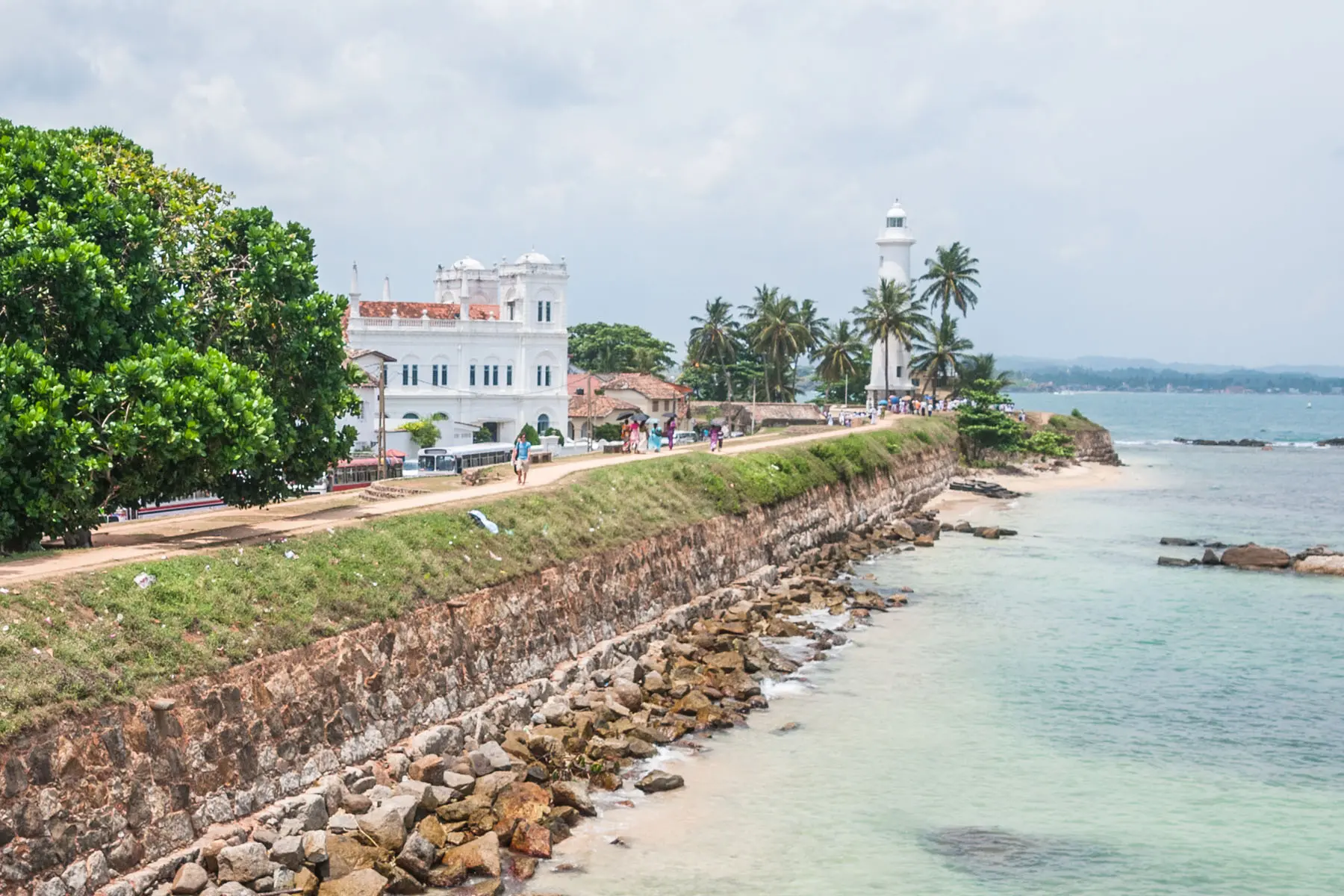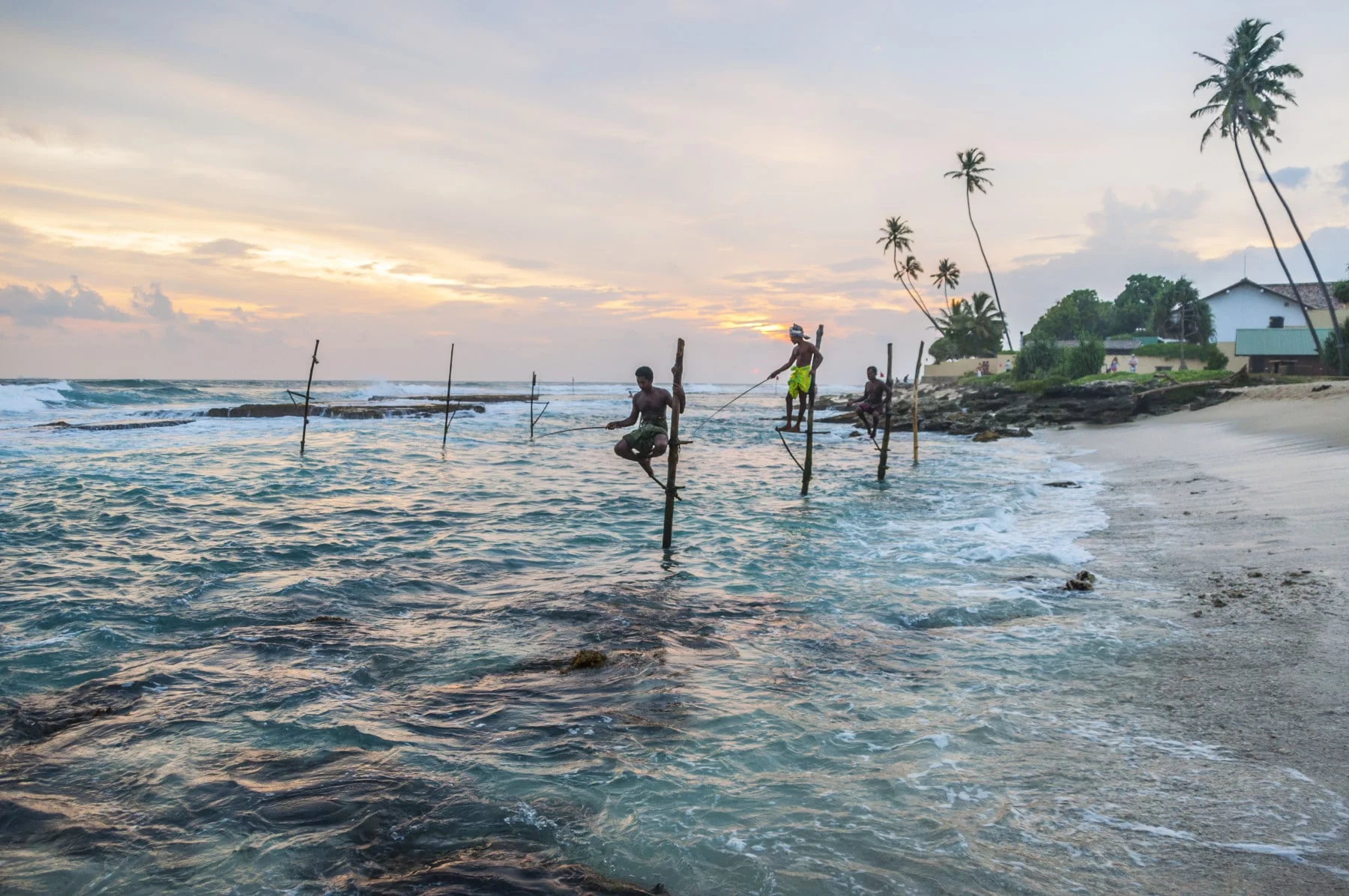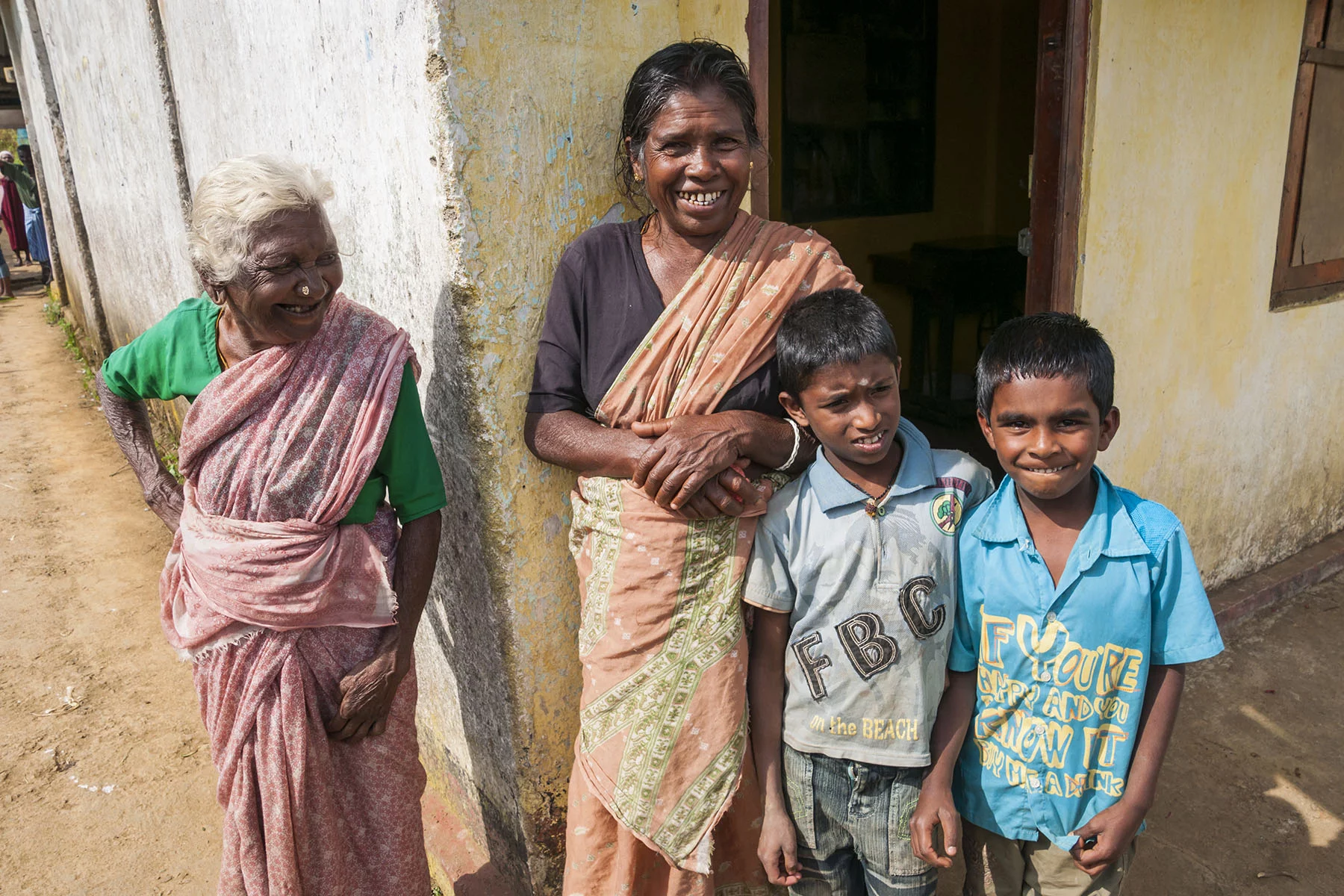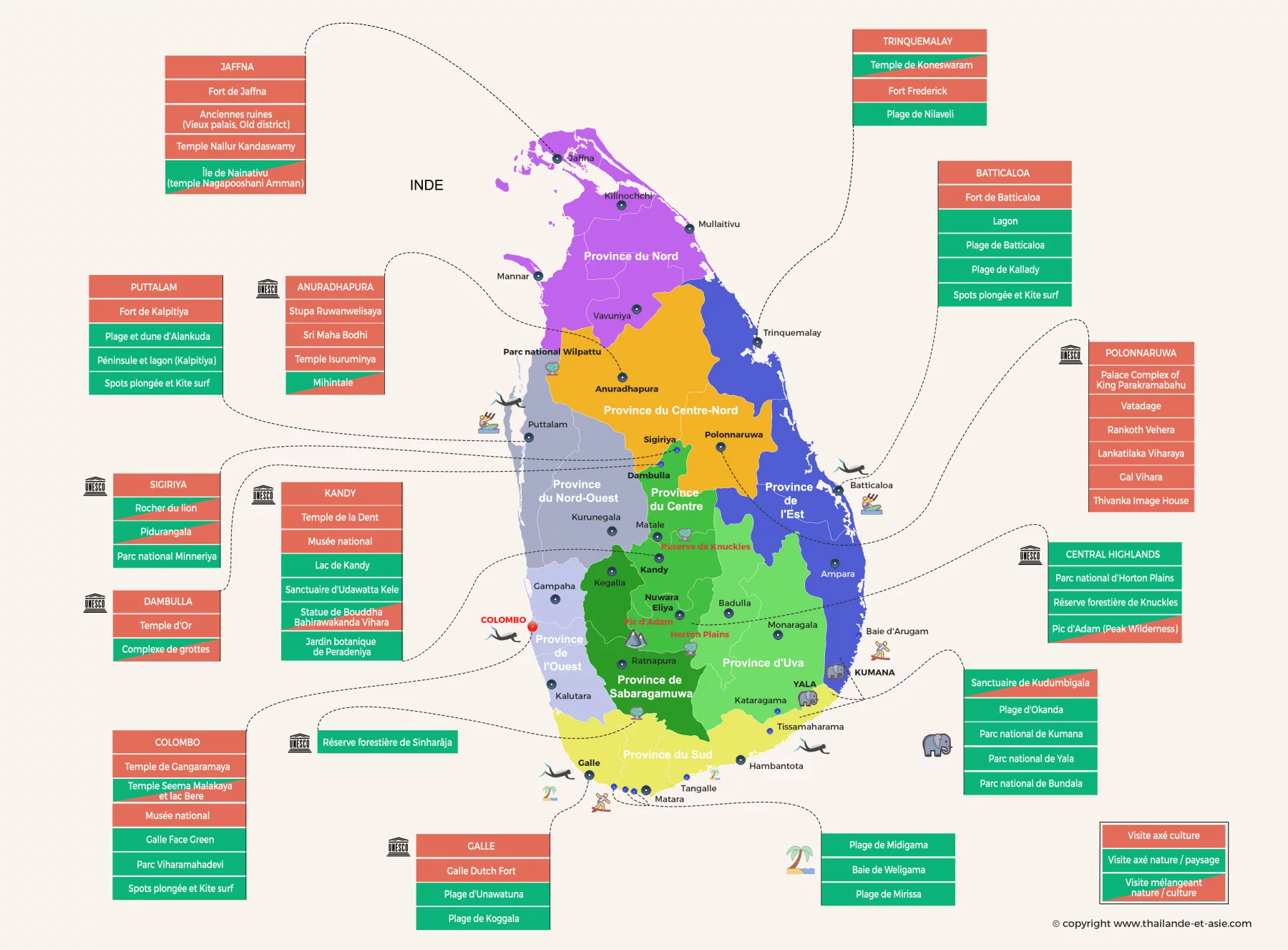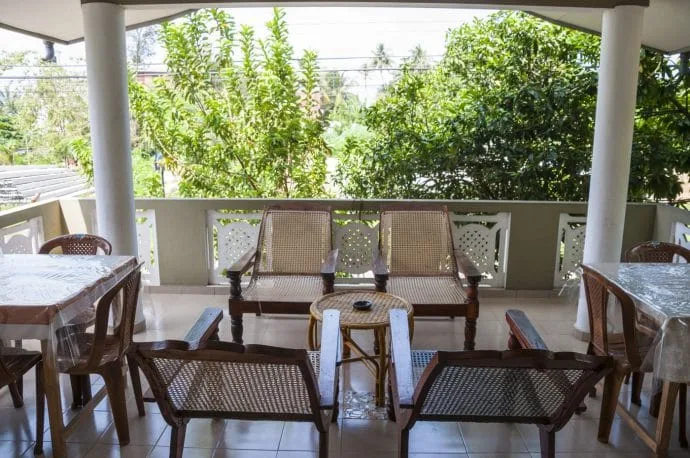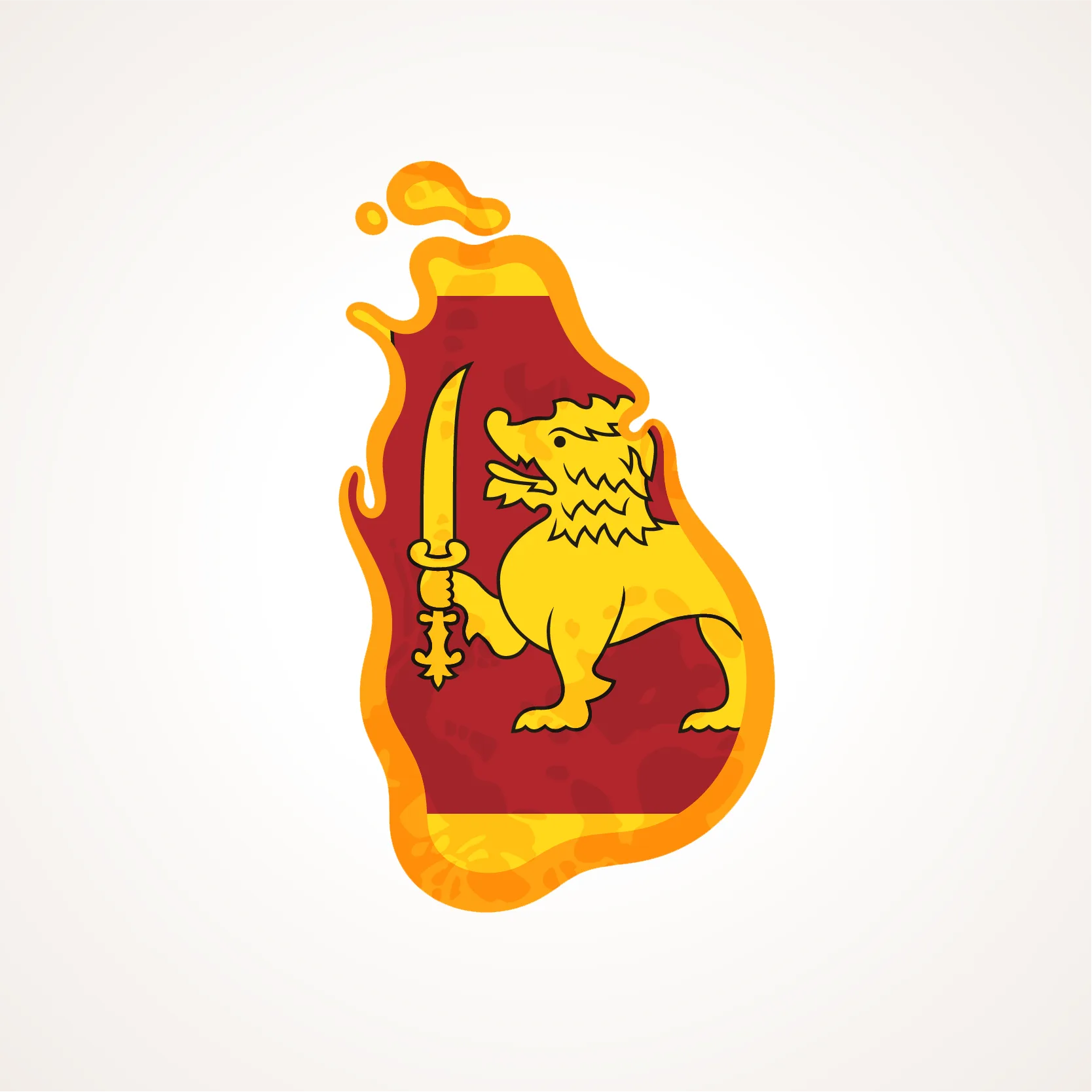Why visit Sri Lanka?
Sri Lanka is a country that surprised me with its rich culture, diverse landscapes, and the kindness of its people. I must say that initially, I hadn't particularly planned a stay on "the resplendent island," one of its nicknames.
But when the opportunity arose, we planned an itinerary from the southern beaches up to the heart of the cultural triangle, formed by the ancient historical cities of Dambulla, Anuradhapura and Polonnaruwa, not forgetting the famous Lion Rock of Sigiriya.
Separated from India by a strait of approximately 31 km, the island shares certain influences while asserting a strong identity. Throughout the centuries, it has been nicknamed the Emerald Isle, the Pearl of the Orient, Serendib, the Ruby Island… and, more recently, the “Teardrop of India” for its shape. The name Ceylon, in fact, still lingers in people's minds.
Like Indonesia and Malaysia, Sri Lanka has experienced several periods of colonization: Portuguese, Dutch, and then British. The British structured the railway network and developed tea plantations in the central mountains (a historical observation, without value judgment).
The country only truly opened up to tourism after the end of the civil war in 2009, which pitted the government against the Tamil Tigers (LTTE) for nearly thirty years. The island is predominantly Sinhalese, with a significant Tamil minority, still very present in the tea plantations.


Despite its past, Sri Lanka remains easy to travel around and very compact. For a territory almost ten times smaller than France or Thailand, it boasts long, unspoiled beaches, tea-covered mountains, ancient temples, national parks, and several former royal capitals.
Unawatuna, Dambulla, Sigiriya, Ella, Kandy, Anuradhapura… each region has its own atmosphere. The island lends itself equally well to a cultural trip as to a nature or beach holiday, without endless distances.
- Sri Lankans are generally friendly and welcoming people.
- Costs remain rather cheap.
- Varied landscapes
- Lots of wild animals (safaris in Sri Lanka are famous).
- Getting around wasn't always easy, finding the right bus, getting a seat… (well, you have to put things in context, it was during Buddhist New Year, so it was very crowded…)
- Lack of variation in dishes (rice curry, rice curry or… rice curry?)
For tourist stays in Sri Lanka, an Electronic Travel Authorization (ETA) is required. The country very often applies a 30-day fee waiver (variable depending on the period and nationality), but The ETA remains mandatory.
Duration and conditions
- Standard duration : 30 days (single or multiple entry depending on the period).
- On-site renewal : possible up to 90 days (at the Department of Immigration, Colombo).
- Passport : minimum validity of 6 months after entry.
- Return ticket : sometimes requested.
- Hosting An address may be required upon arrival.
How to apply
The ETA is done online at the official website (This is the preferred method to avoid intermediary fees). You will then receive authorization by email within 24 to 72 hours.
- Usual delay : fast (usually < 48 h).
- At the arrival Immigration scans the passport and checks the ETA in their system.
Visa cost
- Frequent exemption : free for 30 days (periods renewed regularly).
- Outside the exemption period : fees vary depending on nationality and type of entry.
Please note: Conditions change frequently (temporary offers, extended exemptions). Check the fare and eligibility just before your trip.
Practical advice
– print or save the ETA on your phone;
– check the validity of your passport (minimum 6 months);
– plan for a first night booked (often requested at check-in).
Sri Lanka has a tropical climate characterized by two main seasons — dry and wet — and especially by two distinct monsoonsDepending on the time of your trip, different regions will offer different conditions.
- The Yala Monsoon (southwest) breath of May to AugustThis is the most intense: it affects especially the west coast, the south coast et the central mountains, with sometimes heavy rain.
- Maha's Monsoon (northeast) takes over fromOctober to JanuaryIt brings rain to the North et the east coast.
Temperatures remain high all year round: generally 28 ° C to 34 ° C during the day, with minimum temperatures around 22-26 ° CThe warmest months are between March and Junethe gentlest among November and Januarya bit like in Thailand.
On Highlands They benefit from a much cooler climate thanks to the altitude. In Nuwara Eliya, maximum temperatures rarely exceed 23°C even in April, and we're usually around 18-20 ° C In July. The nights can be very cool: 9°C in January, often around 12-13 ° C mid-year.

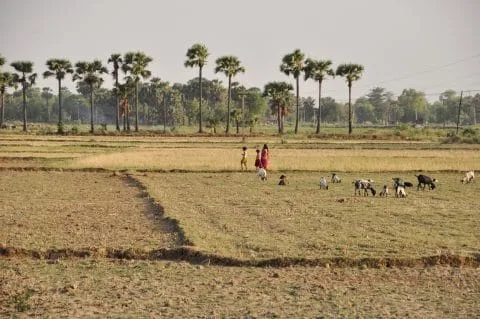
Best time to visit Sri Lanka
Thanks to the two monsoons, this creates opposing seasons depending on the regionSo, good news: there is always an area where you can travel in good conditions.
- West Coast & South (Colombo, Galle, Mirissa): best period december to march.
- East Coast & Northeast (Trincomalee, Batticaloa, Arugam Bay): best period April to September.
- Highlands (Kandy, Ella, Nuwara Eliya): cooler climate january to march are the most pleasant months.
To help you choose the ideal time based on your itinerary, here are the trends region by region.
WEATHER REPORT - West Coast & South
| Month | Minimum temperature | Maximum temperature | Rain | Features |
|---|---|---|---|---|
| Jan. | 23°C | 31°C | 60 mm | Dry season, rather calm sea |
| Feb. | 24°C | 31°C | 70 mm | Very good by the sea |
| Mars | 25°C | 32°C | 120 mm | Rising heat |
| Apr. | 25°C | 32°C | 200 mm | More frequent showers |
| Mai | 26°C | 31°C | 300 mm | Start of monsoon SW |
| June | 25°C | 30°C | 350 mm | SW monsoon (rough seas) |
| Jul. | 25°C | 30°C | 300 mm | Winds + rain |
| August | 25°C | 30°C | 240 mm | Monsoon still active |
| Sept. | 25°C | 30°C | 220 mm | The rains are gradually ending. |
| Oct. | 24°C | 30°C | 250 mm | Between seasons |
| Nov. | 24°C | 30°C | 150 mm | Back to a good window |
| Dec. | 23°C | 30°C | 90 mm | Very good period |
WEATHER — East Coast & Northeast
| Month | Minimum temperature | Maximum temperature | Rain | Features |
|---|---|---|---|---|
| Jan. | 23°C | 29°C | 220 mm | active NE monsoon |
| Feb. | 24°C | 30°C | 180 mm | Residual rainfall |
| Mars | 25°C | 31°C | 90 mm | Supplier |
| Apr. | 26°C | 32°C | 70 mm | The start of the good season |
| Mai | 27°C | 33°C | 40 mm | Very good (surfing Arugam Bay) |
| June | 27°C | 33°C | 20 mm | Sun, favorable sea |
| Jul. | 27°C | 33°C | 20 mm | Peak season |
| August | 26°C | 33°C | 30 mm | Very good |
| Sept. | 26°C | 33°C | 60 mm | Still favorable |
| Oct. | 25°C | 32°C | 180 mm | Return of the rains |
| Nov. | 24°C | 30°C | 300 mm | Northeast monsoon (heavy downpours) |
| Dec. | 23°C | 29°C | 250 mm | Monsoon NE |
WEATHER — Highlands
| Month | Minimum temperature | Maximum temperature | Rain | Features |
|---|---|---|---|---|
| Jan. | 12°C | 22°C | 90 mm | Cool in the morning/evening |
| Feb. | 13°C | 23°C | 70 mm | Good visibility |
| Mars | 14°C | 24°C | 130 mm | Possible showers |
| Apr. | 15°C | 24°C | 220 mm | Heavy rainfall |
| Mai | 16°C | 23°C | 280 mm | Monsoon SW |
| June | 15°C | 22°C | 260 mm | Rain + fog |
| Jul. | 15°C | 21°C | 220 mm | Damp, reduced visibility |
| August | 15°C | 21°C | 210 mm | Watered again |
| Sept. | 15°C | 22°C | 180 mm | Transition |
| Oct. | 15°C | 22°C | 230 mm | Inter-monsoon rains |
| Nov. | 14°C | 22°C | 160 mm | Correct window |
| Dec. | 13°C | 21°C | 120 mm | Fresh but pleasant |
Sri Lanka brings together a rather crazy diversity in a relatively compact area: still unspoiled beaches, ancient royal cities listed as UNESCO World Heritage sites, mountains covered with tea plantations, wildlife, Buddhist and Hindu temples… To simplify, visits can be divided into six major regions.
1) Colombo and the West Coast
Colombo, often the gateway to the country, offers some pleasant stops: the temple Gangaramaya, the surroundings of the Lake Beira and the seafront of Galle face greenFurther north, the temple of Kelaniya Raja Maha Vihara worth a detour, even if the whole area remains rather unattractive for a long stay.
This is also why many prefer to settle directly in Negombo, very close to the international airport: a beach, peace and quiet, and a good spot to recover from the flight.
There is no shortage of beaches and diving spots on the west coast: Mount Lavinia, bentota, the major fishing port of Beruwela or Kande Viharaya templeFurther north, the region of Kalpitiya seduced by its dunes, its lagoon, an old Dutch fort and its ideal conditions for the kite surfing.
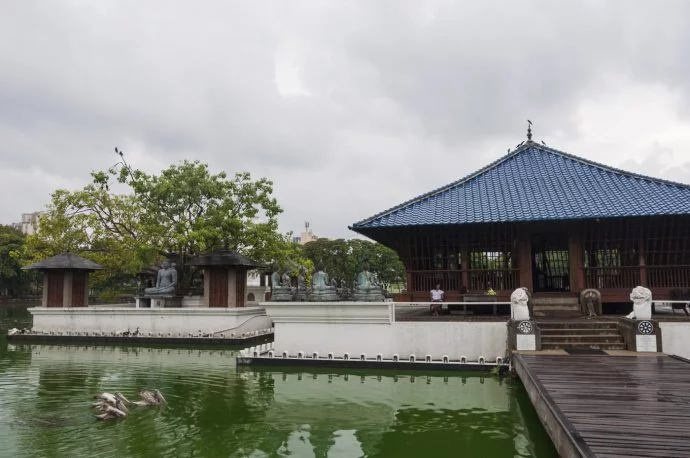
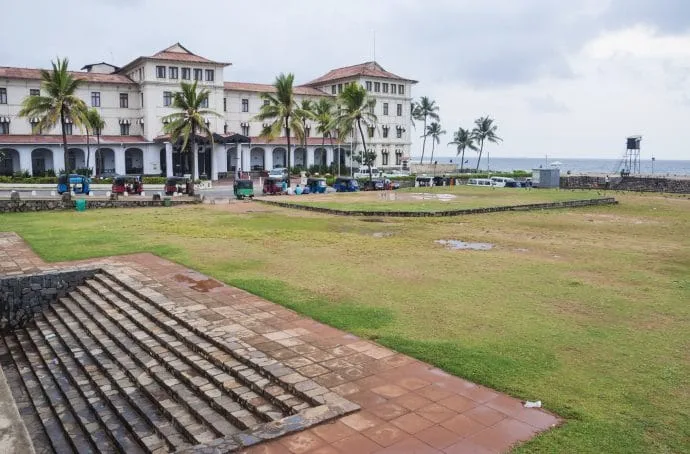
Colombo — worth seeing
- Temple of Gangaramaya & a walk around the Lake Beira
- Galle face green at sunset
- Kelaniya Raja Maha Vihara (north of Colombo)
- Mount Lavinia (beach, seaside restaurants)
- Negombo (Practical activity after the flight: beach and fish market)
Some must-sees on the West Coast
- bentota (beach, snorkeling)
- Beruwela (large fishing port, fish market)
- Temple of Kande Viharaya
- Kalpitiya (lagoon, dunes, kite surfing, reefs)
- Wreck diving: SS Perseus, Thermophylae Sierra (depending on level)
2) The southern coastline
The most renowned region is located between Galle et MataraGalle is one of the country's must-see attractions with its fortified old town UNESCO World Heritage Site and its iconic lighthouse. Nearby, the beach ofUnawatuna is perfect for a first swim in the sea.
Continuing east: the famous fishermen on stilts in Koggala, the beaches of mid-gama et Coconut Beach, then the large bay of Never, a paradise for beginner surfers. Mirissa is more lively, while Tangalle offers a final, more peaceful stop before heading back up towards the national parks.
From tissamaharama ou Kataragama, we access the Yala National Park, one of the best places in the country to observe wild elephants, crocodiles and leopards.


Galle — worth seeing
- fortified old town (UNESCO)
- Headlight & ramparts
- Maritime Museum (depending on interest)
Between Galle and Matara — beaches & rest stops
- Unawatuna (Easy for a first bath)
- Koggala (fishermen on stilts)
- mid-gama & Coconut Beach (points of view)
- Never (beginner surfing)
- Mirissa (more lively; whale watching trips depending on the season)
- Tangalle (calm, long beaches)
Yala Safari — practical information
- base: tissamaharama ou Kataragama
- Fauna: leopards, Elephants, crocodilesbirds
- Book the veille (or via hosting)
3) The central mountains
The central region is a blend of primeval forests, tea plantations, and ancient temples. A UNESCO World Heritage Site, Sinharaja reserve is considered the last great primary rainforest in the country.
Ella is an excellent starting point for the famous train journey to Nuwara Eliya, one of the most beautiful in Asia, nestled between mountains and tea plantations. Nearby: Ravana Falls, Little Adam's Peak and several waterfalls visible from the road.
The region of Central Highlands concentrates many sites: the country's highest point, the Pidurutalagala, the national park of Horton Plains (World's End, Baker's Falls), the area of Devil's Stair, or even the falls of Bambarakanda Falls et Lanka Ella.


Further west, the adam peak (Sri Pada) has been attracting pilgrims from the four major religions present in the country for a millennium. The ascent mainly takes place between December and May.
Heading north, Kandy stands out as a major stop: its lake, the Temple of the Tooth, the forest sanctuary ofUdawatta Kele and the verdant surroundings. Nearby, the Knuckles reserve completes the mountainous area.
Ella — key points
- Ella train → Nuwara Eliya (scenic route)
- Little Adam's Peak, Ravana Falls
- Views and easy short hikes
Nuwara Eliya — tea & surroundings
- Plantations & factory tours
- "Climate resort" atmosphere
- Summit : Pidurutalagala (highest point, restricted access)
Horton Plains — practical information
- Hike to World's End & Baker's Falls
- Start date early (fog after 9-10am)
- Warm clothing (altitude, wind)
Adam's Peak (Sri Pada)
- Main period: December → May
- Nighttime ascent for sunrise
- Lots of steps; bring water and a windbreaker
Kandy — essential
- Temple of the Tooth & walk around the lake
- Sanctuary ofUdawatta Kele
- Access to the Knuckles reserve (hiking)
4) The cultural triangle
This area connects Kandy, Polonnaruwa et Anuradhapura, the historical heart of Sri Lanka. It contains the caves of Dambulla, Lion Rock de Sigiriya and several former capitals.
À PolonnaruwaWe explore the ruins of the ancient city (122 hectares), including major sites such as the Vatadage, Lankatilaka and the statues of Gal Vihara. The Minneriya National Park is a good alternative for observing elephants if you are not going down to the southern parks.
Anuradhapura was a capital for 1,300 years: vast, thousand-year-old stupas, temples still active, and above all the Sri Maha Bodhi, a cutting from the tree under which Buddha attained Enlightenment. The great stupa of Ruwanwelisaya is one of the most imposing religious monuments in the world.
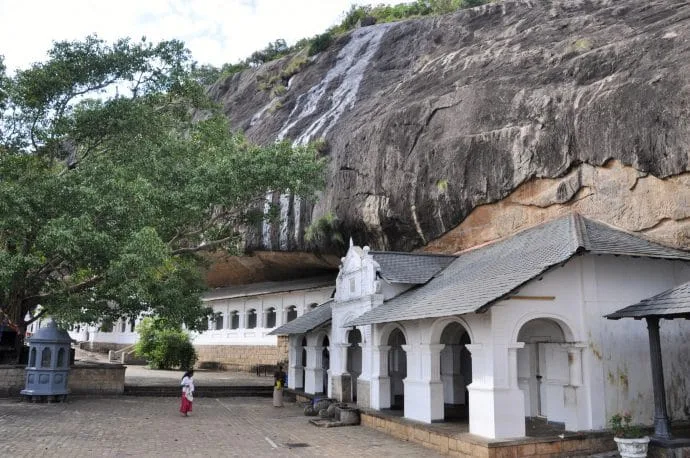

Sigiriya
- Lion Rock (UNESCO) — early morning ascent
- A calmer alternative: Pidurangala (view of Sigiriya)
Dambulla
- Complex of cave-temples (paintings & statues)
- Arrive in late afternoon (light, fewer people)
Polonnaruwa
- Vatadage, Lankatilaka, Gal Vihara
- Bike rental available for visiting the site (122 ha)
Anuradhapura
- Ruwanwelisaya, Jethawanaramaya (giant stupas)
- Sri Maha Bodhi (sacred tree)
5) The East Coast
Wilder and less frequented, the east coast comprises three main areas. In the south, the bay ofArugam attracts surfers and long-distance travelers. Nearby: the Kudumbigala Shrine and Kumana National Park.
Further north, Beat it et Kalkudah/Pasikudah They offer quiet beaches, kayaking in the lagoon, a market, a lighthouse and several diving sites.
Trincomalee (Trincomalee) blends Hindu temples (including the spectacular Koneswaram), Dutch fort (Fort Frederick), hot springs of Kanniya and beaches Nilaveli et UppuveliIt also provides access to the marine park of Pigeon Island.
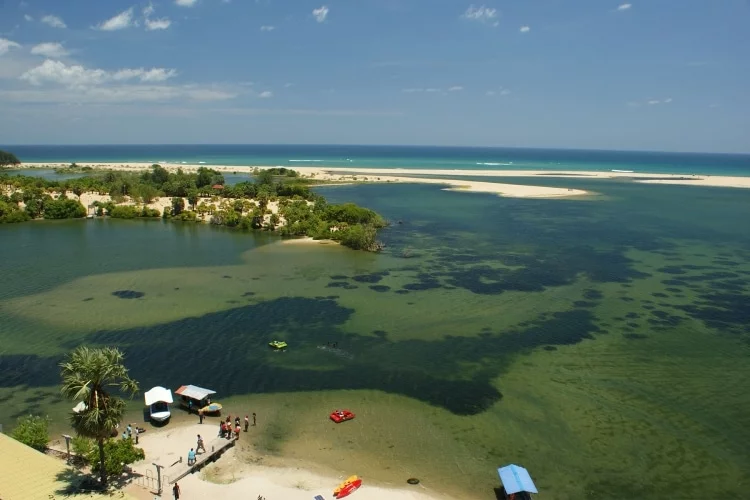
Arugam Bay
- Surf & backpacker vibe
- Kudumbigala (hermitage), Kumana Park
Batticaloa / Pasikudah
- Beaches Kalkudah & Pasikudah
- Kayaking on the lagoon, Lighthouse, market
Trincomalee
- Fort Frederick, Koneswaram temple
- Hot springs of Kanniya
- Beaches: Nilaveli & Uppuveli
- Snorkeling: Pigeon Island (marine park)
6) The Northern Provinces
The main city is Jaffna, former Tamil cultural capital: Jaffna FortHindu temples (in particular) Nallur kandaswamy), port, markets and neighborhoods marked by the civil war. Jaffna's unique feature is that it is located on a peninsula, cut off from the rest of Sri Lanka by the Indian Ocean which crosses the country from one side to the other.
Offshore, several islands are worth a visit: in particular Nainativu and its temple Nagapooshani Amman, with the added bonus of Buddhist temples and a mosque.
Finally, the island of MannarFurther south, it straddles Palk Bay and the Gulf of Mannar. With its line of small islands and sandbanks extending from it, named Adam's Bridge, it separates the Palk Strait of the Gulf of Mannar, separating the Indian state of Tamil Nadu from the Jaffna peninsula.

Jaffna
- Jaffna Fort & old town
- Temple Nallur kandaswamy
- Markets & library (city symbol)
Islands off the coast of Jaffna
- Nainativu : temple Nagapooshani Amman
- Small Buddhist temples & mosques
Mannar
- Strong, long wild beaches
- Adam's Bridge (alignment of sandbanks)
Sri Lanka in brief
- Colombo: Gangaramaya temple, Galle Face Green, diving spots, Mount Lavinia.
- Galle: old fort, lighthouse, Unawatuna and Koggala beaches.
- Tissamaharama: Raja Maha Vihara Stupa, Kirinda Vihara Maha Devi Temple, Yala National Park.
- Highlands: tea plantations (Nuwara Eliya), Horton Plains National Park, Adam's Peak.
- Kandy: Temple of the Tooth, lake, Udawatta Kele Sanctuary, Dunumadalawa Reserve.
- Cultural Triangle: Dambulla, Sigiriya, Polonnaruwa, Anuradhapura.
- East Coast: Trinquemalay (Hindu temples, Nilaveli beach), Batticaloa (Kallady beach, markets).
- Jaffna: Peninsula and its islands, old fort, Hindu temples.
Sri Lanka landmarks on a map
Here is a personal map to locate and summarize all the important destinations and main places of interest in Sri Lanka:
Sri Lanka is ideal for road trips, allowing you to travel reasonable distances, with diverse landscapes and a good balance between nature, culture, and beaches. Before suggesting itineraries based on the length of your stay, let me share our 12-day itinerary.
Our 12-day Itinerary
It was a journey that placed great emphasis on culture, particularly by visiting the major sites for any self-respecting Buddhist. It's not an itinerary that would suit everyone, partly because we were moving every day—a habit for us, as we have a thirst for discovery.
Ultimately, with only 12 days, we had to make choices, so we missed some "must-see" sites due to lack of time. Despite this, this itinerary gave us a good overview of the country.
- Day 1 : arrival in Colombo → transfer to Galle
- Day 2 Galle and surrounding area
- Day 3 : bus → Ella
- Day 4 Nuwara Eliya
- Days 5–6 Kandy
- Day 7 Dambulla
- Day 8 : Polonnaruwa
- Day 9 Anuradhapura
- Day 10 Sigiriya
- Day 11 : return to Colombo
- Day 12 : Columbus
Trick To easily travel between Dambulla, Polonnaruwa, and Anuradhapura, we chose Dambulla because it's a city, so we had quick access to buses. If we were to do it again, we would have preferred to stay in Dambulla. Habarana as a base, the small locality being ideally located at a crossroads between these destinations, in addition to being close to the Minneriya reserve.
Other ideas depending on the duration
In short, I would say that to discover the country at a reasonable pace, you need to allow 15 days to see the essentials, and even then, you will obviously miss some destinations, but two weeks being a "standard" duration for stays abroad, it is a good starting point.
However, I offer you some "short" itineraries, for those who still want to get away from it all but don't have much time, and conversely, the long version to explore the country as a whole.


1 week – North Central (heritage)
In a nutshell Ancient cities and UNESCO sites, perfect for a first cultural experience.
- Day 1 Colombo (arrival)
- Days 2–3 Kandy (Temple of the Tooth, walk around the lake)
- Day 4 Dambulla (caves)
- Days 5–6 : Sigiriya (Lion Rock + Pidurangala)
- Day 7 : safari at Minneriya or beach in Negombo → Colombo
1 week – Southern Loop & mountains
In a nutshell A combination of the historic coastline, the plantation train, and the holy city. This is the express version of our itinerary, without the cultural triangle.
- Day 1 Colombo → Galle
- Day 2 : Galle + beaches (Unawatuna / Koggala)
- Days 3–4 Nuwara Eliya (scenic train from Ella if possible)
- Days 5–6 Kandy
- Day 7 Colombo's return
2 weeks – Classic loop (culture + nature)
In a nutshell : allows for the inclusion of a national park and more flexible stages.
- Columbo (1 night)
- Galle (2 nights)
- Kataragama (2 nights) – Yala National Park (1 day)
- Nuwara Eliya (2 nights)
- Kandy (2 nights)
- Dambulla (1 night)
- Polonnaruwa (1 night)
- Sigiriya (2 nights)
- Anuradhapura (1 night)
- Columbo (1 night)
Variant : visit Anuradhapura on a day trip from Sigiriya and add a night in Sigiriya.
1 month – Grand tour (beaches, highlands, cultural triangle, North & East)
In a nutshell : a complete overview with room to breathe.
- Colombo (1 night)
- Galle (2 nights)
- mid-gama ou Mirissa (2 nights)
- Kataragama (2 nights) – Yala (1 day)
- Arugam Bay (2 nights) – Kudumbigala/Kumana (1 day)
- Aralutalawa (2 nights) – Horton Plains / World's End
- Nuwara Eliya (2 nights)
- Maskeliya (2 nights) – Adam's Peak
- Kandy (2 nights)
- Batticaloa (2 nights)
- Polonnaruwa (1 night)
- Sigiriya (2 nights) – Dambulla (1 day)
- Trincomalee (2 nights)
- Jaffna (2 nights)
- Anuradhapura (1 night)
- Colombo (2 nights)
Indicative total : ~29 nights (1–2 nights margin for travel or extended rest).
Coming to Sri Lanka
Arrival is usually at the international airport Bandaranaike, located 30 km north of Colombo and right next to NegomboThat is why many travellers prefer to settle first on the beach in Negombo rather than starting with a direct visit to Colombo.
To date, there is no no direct flights between France and Sri Lanka. All journeys include at least one stopover.
Most convenient airlines from France
Three Gulf carriers generally offer the best compromise in terms of travel time and fares:
- Etihad Airways – stopover in Abu Dhabi
- Emirates – stopover in Dubai
- Qatar Airways – stopover in Doha
These are three very good airlines. A stopover could even be an opportunity to briefly visit Abu Dhabi. Dubai or Doha (some offers sometimes include a free night stopover).
The best rates are generally around 450–500 € A/R.
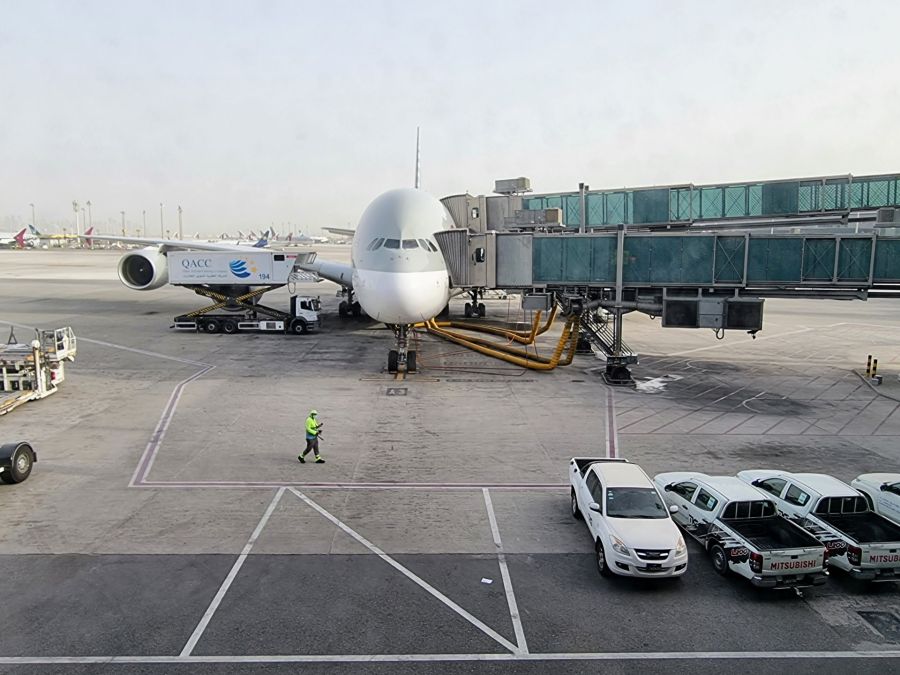
National Company
The national company SriLankan Airlines It operates primarily from Asia and the Middle East. It does not currently offer no direct flights from France, but provides convenient connections via:
- Doha
- Abu Dhabi
- Kuala Lumpur
- Singapore
- Bangkok
It can therefore be used for a "regional" connection if you combine Sri Lanka with another Asian country.
Other possible companies
- Oman Air – good value for money, stopover in Muscat
- Turkish Airlines – via Istanbul, often competitive
- Finnair – via Helsinki (depending on season)
- Saudi Arabian Airlines – attractive fares but long layovers
In summary: for a first stay, the three Gulf companies remain the most convenient and fastest.
Search for a flight to Sri Lanka
Getting around in Sri Lanka
Sri Lanka's road network is generally decent, but driving can be quite chaotic: frequent high-speed overtaking, quick honking, and buses that drive very fast. Nothing insurmountable, but it's good to be aware of it (to put things in perspective, the road fatality rate in Thailand is worse...).
The train remains an excellent alternative on certain sections, even if the network isn't as extensive as India's. For the rest, buses, taxis, tuk-tuks, and private transfers round out the options.
Road transport
The bus is the most common mode of transport in Sri Lanka. Local buses are very cheap, sometimes crowded, and the driving experience can be surprising at first. Air conditioning isn't always available, and comfort varies depending on the route. This is based on our experience, which was limited to local buses because our journeys generally didn't exceed three hours, but things may have changed somewhat since then…
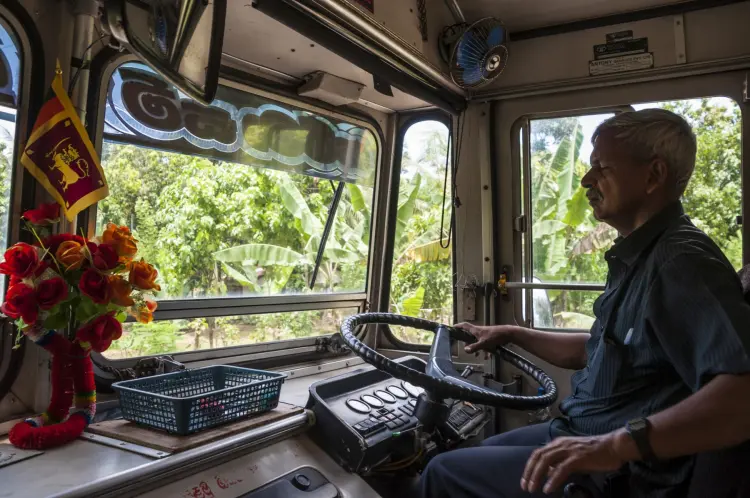

For long journeys, there are more comfortable "intercity" buses, sometimes with online booking.
Useful platform (online booking): busseat.lk
Note: the cities displayed on these platforms are often the final destinations. You may need to take a long-distance bus (e.g., Colombo → Kataragama) to get off at an intermediate city (Galle, Matara, etc.).
Intercity bus (long distance)
In addition to regular public buses, Sri Lanka offers more comfortable "intercity" lines operated by private or semi-public companies. These are often air-conditioned, with numbered seats and more direct routes. This is the easiest option if you want to avoid the erratic driving of local buses.
Main companies:
- NTC / SLTB Intercity — long distance public service (AC / Non-AC)
- NEX Express — private, fairly reliable, air-conditioned buses
- Superline — tourist buses, newer
- Senura Express — several long-distance routes (South & East)
Examples of routes (indicative):
- Colombo → Galle / Matara — 2.5 to 3 hours • 300–600 Rs depending on service
- Colombo → Kandy — 3:30 to 4:30 AM • 300–500 Rs (AC slightly more expensive)
- Colombo → Trincomalee — 6am to 7am • 600–1,000 Rs
- Colombo → Jaffna — 8am to 9am • 800–1,000 Rs
- Kandy → Batticaloa — 5:30 a.m. • approx. 600–900 Rs
Good to know:
- Intercity buses are much more stable and less "sporty" than local buses.
- The schedules are more reliable, but not down to the minute.
- The air conditioning can be strong: bring a sweater.
- Intermediate stops are limited → perfect for long journeys.
Taxis and tuk-tuks (trishaws)
In cities, the trishaw (tuk-tuk) reigns supreme. For short distances, it's the most practical option. For a day trip (Polonnaruwa, Anuradhapura, etc.), drivers often offer a reasonable flat rate.
Indicative prices : an urban journey often costs between 300 and 600 Rs depending on the distance.
For Colombo, two apps are really useful:
- Uber — taxis and tuk-tuks
- PickMe — main local application (tuk-tuks + taxis)
For longer journeys, private transfers are convenient and safer than buses:
Useful comparison : Sri Lanka Taxi Share
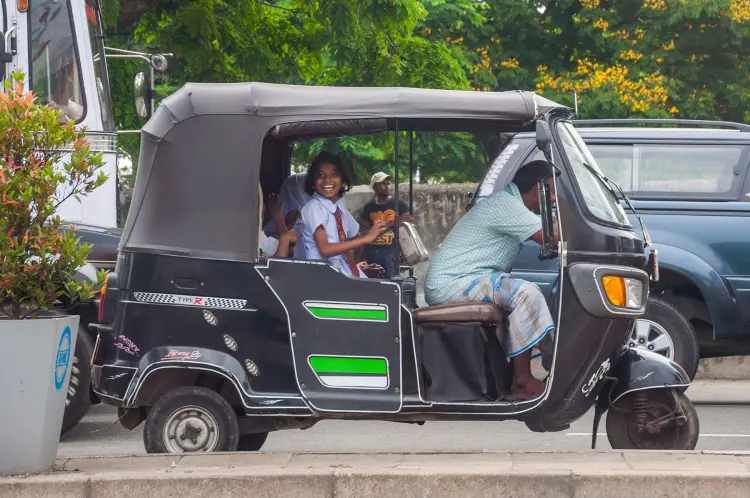
Motorcycle & car rental
Scooter rental is possible in tourist areas like Galle, Ella, or Mirissa. However, it is not recommended if you are not used to driving in Asia or do not have the appropriate international driving permit.
Renting a car without a driver is not recommended: driving can be difficult, road signs are inconsistent, and overtaking is frequent. Hiring a driver is more sensible, especially for mountainous routes.
Rail transport
The railway network spans approximately 1,500 km and provides good service to the main tourist areas. If I had to summarize the Sri Lankan railway, I would define it in three points:
Modest network, superb scenery, modest speeds.
The Sri Lankan rail network is proportionally much smaller than that of its neighbor, India, and often single-track: expect some average speeds of 35–55 km/h according to the lines. The journeys in the Hill country (teas, viaducts) are slow but among the most
beautiful people from Asia.

There are no subways or trams in Sri Lanka. Urban transport relies solely on buses, suburban trains (around Colombo), and tuk-tuks. The Colombo light rail (LRT) project was abandoned in 2021.
Main lines
- Colombo → Kandy → Nuwara Eliya (Nanu Oya) → Ella → Badulla
A legendary route through the tea plantations. - Colombo → Anuradhapura → Jaffna
Ideal for reaching the north and the former capitals. - Colombo → Polonnaruwa → Trincomalee / Batticaloa
Very busy during the summer, the high season on the East Coast. - Colombo → Galle → Matara
Coastal line with sea views for several tens of kilometers.

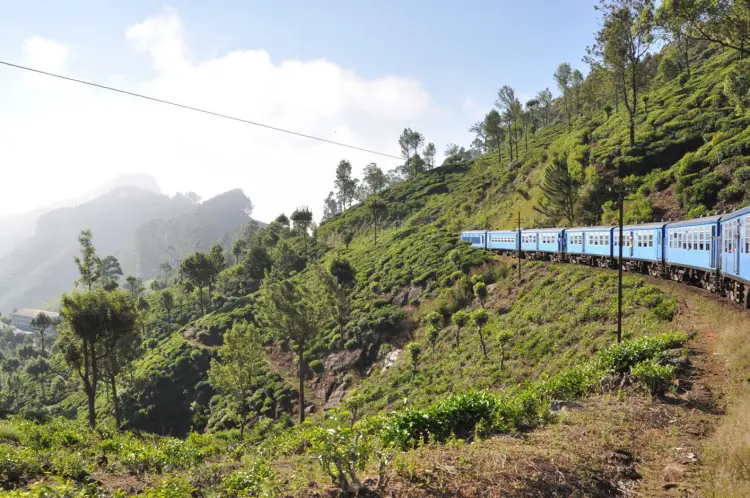
Classes & comfort on board
- 1st Class Reserved seats, air conditioning (depending on the train)
- 2nd Class reserved or unreserved seats
- 3rd class unreserved, very local seating
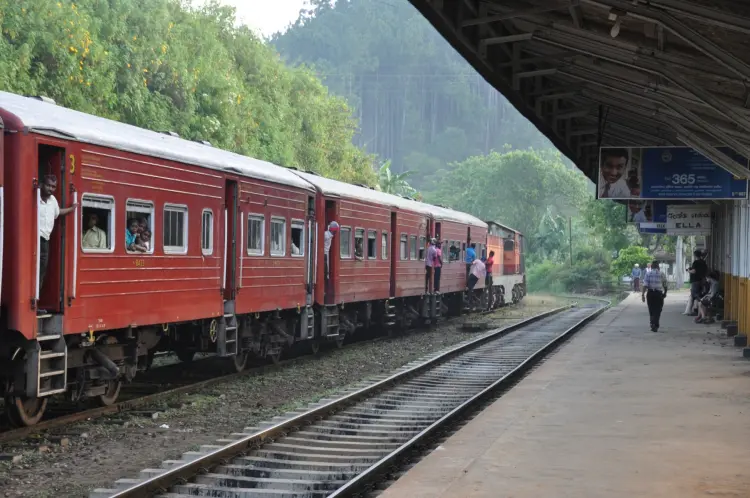

Examples of travel times (order of magnitude)
- Colombo ⇄ Kandy : ~2h30–3h30 (express), longer by local bus.
- Kandy ⇄ Ella (via Nanu Oya/Badulla): ~6–7h, very scenic.
- Colombo ⇄ Ella (via Kandy/Badulla): ~8–10 hours in total.
- Colombo ⇄ Galle/Matara (south coast): ~2–3h / ~3–4h.
- Colombo ⇄ Jaffna : ~5:30–7:00 depending on stops.
- Colombo ⇄ Trincomalee : ~5:30–7:30.
- Colombo ⇄ Anuradhapura : ~3:30–5:00.
- Colombo ⇄ Nanu Oya (Nuwara Eliya) : ~4:30–6:00.
What to expect at the station
Medium-sized stations, sometimes basic ticket counters and variable displays. Arrive early for unreserved seats (2e/3e) and locate
your car if you have a numbered reservation.
Convenient : book scenic and InterCity trains in advance (High season, weekends). To optimize time on major flat routes (e.g. Colombo ⇄ Jaffna), the express bus may be faster, but the train remains more comfortable and scenic.
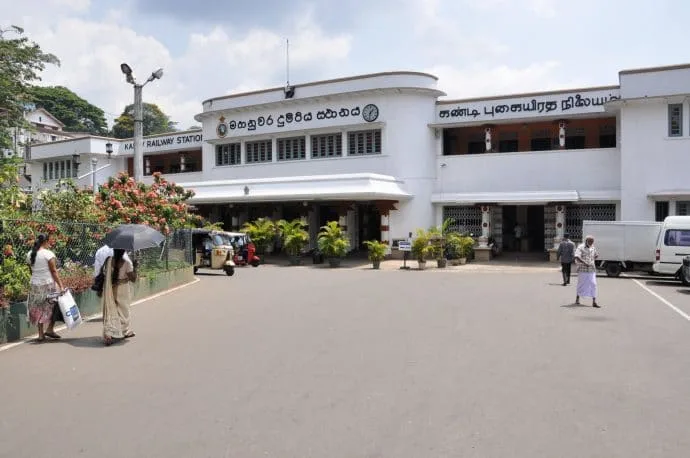

Reservations & tickets
The official website still does not offer online booking. Several private options exist:
Shipping
With its 1,340 km of coastline, the island includes 6 main ports:
- Columbo
- Galle
- Hambantota
- Kankesanthurai (Jaffna)
- PointPedro
- Trincomalee
One might assume that, given Sri Lanka is an island, there would be ferry connections somewhere, if only to reach its Indian neighbor. While a Sri Lanka-India ferry (Tuticorin) did exist for a time, it was discontinued over 30 years ago. Several discussions are underway to revive the service, but nothing is operational to date.
So in summary, in Sri Lanka, there is currently no no regular ferry service between coastal cities.

Air transport
The country has several airports, but only a few are of real tourist interest. However, given the country's size (less than 400 km long), this mode of transport is unlikely to be used during a typical stay in Sri Lanka.
But I like to be thorough, so here is the essential information you need to know.
Companies operating domestic flights:
Most domestic flights are operated with small aircraft or seaplanes.
- Cinnamon Air — Main domestic airline, scheduled and charter flights (Sigiriya, Koggala, Kandy, etc.). Magnificent aerial views, but high prices.
- FitsAir — a few domestic flights (Ratmalana ↔ Batticaloa), light fleet.
- Helitours — helicopters and small planes operated by the army, occasional flights depending on availability.
SriLankan Airlines is not currently operating no regular domestic connectionIts flights are exclusively international.
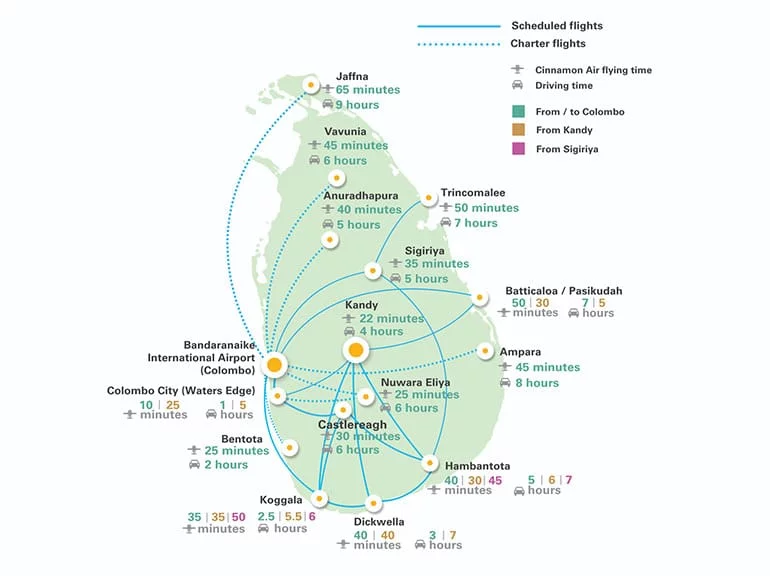
Major international airports
- Colombo – Bandaranaike (CMB)
- Colombo – Ratmalana (RML)
- Hambantota – Mattala (HRI)
- Jaffna – JAF
- Batticaloa – BTC
Main airports for domestic flights
- Sigiriya (GIU)
- Anuradhapura (ACJ)
- Koggala (KCT) – for Galle
- China Bay (TRR) – Trincomalee
Sri Lanka offers a wide enough range of hotels to suit every taste. There are quite a few good options in the 400-800 ฿ (12-24 €) range, which is very reasonable. In our case, we treated ourselves towards the end of our trip.
First, a €50 hotel in Sirigiya, which has changed its name since our visit to become the Kumbukgaha VillaIt certainly had a "luxury" feel, but it was a bit isolated. We then stayed in a €45 hotel in Colombo, but it seems to have since closed down…
Which neighborhood should I choose in Colombo?
- Colombo 03 (Kollupitiya) — Central location, quick access to the seafront, shopping centers, easy transport. Convenient for a first night.
- Colombo 01 (Fort / Pettah) — near Fort station, useful if you're taking an early morning train. Lively area, markets, old colonial architecture.
- Colombo 05 (Havelock Town) — more residential and quiet, good places to eat, well located for exploring by tuk-tuk.
- Mount Lavinia — by the sea, more relaxed. A good option if you want to avoid the hustle and bustle of the city center while still being close to Colombo.
- Negombo (outside Colombo) — next to the international airport. Ideal for a late arrival or an early morning departure.
Tip: To limit traffic jams, aim for accommodation close to your activities or near a train station if you plan to use the train.
After that, in the budget options, we had some nice places like Unawatuna (near Galle), and some not so great ones like Dambulla where the place clearly lacked cleanliness… In Kandy, I wanted to be away from the center for some peace and quiet. We were at the far end of the lake, at Settle Inn Tourist Lodge, a reference at the time for Kandy. It was indeed in a quiet corner and surrounded by nature.

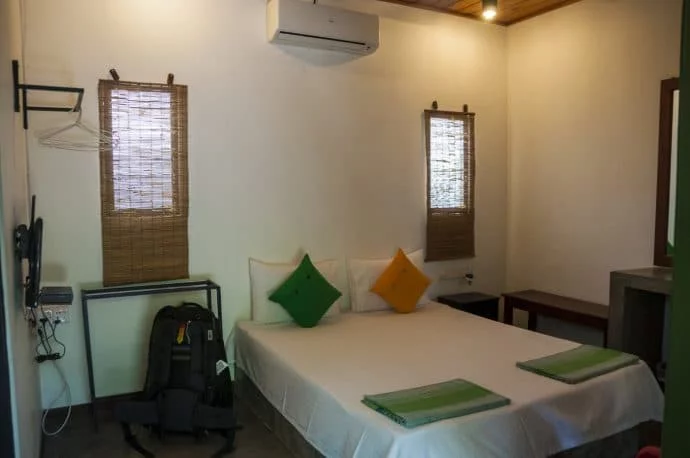
If I had to choose today, I'd go for a slightly cozier option: the Kandy City Oasis Hotel.
Getting back to our best option for the stay, which remains the top choice if you don't need to stay in Galle, I've put all the information in the dedicated box below:
Below is a summary of the best accommodation tips I learned from this trip:
Sam's Guest House
Note: 9,1 / 10
Budget: from 18€
The hotel is not far from Unawatuna Beach. Galle is 7 km away. The welcome and the room were excellent for the price; even better, the hotel, in addition to maintaining its reputation, had recently given the rooms a welcome refresh! As a bonus, we were able to rent a scooter, which allowed us to easily access Galle Fort and explore the surrounding area.
To book a hotel in Sri Lanka, please use the search tool:
Change : The Sri Lankan rupee (LKR, symbol Rs). Banknotes range from Rs 20 to Rs 5,000. The most commonly used denominations are 50 / 100 / 500 / 1000The exchange rate, which for a long time remained below 200 Sri Lankan Rupees for 1 €, has exploded in recent years and is on average around 1 € = 350 Rs.
Conversion reference (indicative) : for quick mental calculation, divide the price by 30, e.g. “100 Rs ≈ €0,30”.
Quick examples – 500 Rs ≈ €1,50 • 1,000 Rs ≈ €3 • 3,000 Rs ≈ €9
- Cards (Visa/Mastercard) : well accepted in mid-range and high-end hotels and restaurants; small commissions possible.
- Local species : indispensable in buses, small restaurants, guesthouses, markets.
- ATM : very frequent; fees may vary depending on local bank (often Rs 200–400).
- QR/mobile payment : local system (LankaQR) → reserved for Sri Lankan accounts.
- Change : avoid damaged bills; keep some small change for tuk-tuks and snacks.
Trick : keep an envelope with the 50/100/500 Rs one for current expenses, and another with large bills for accommodation.
Price benchmarks
Accommodation
- Small budget (single guesthouses / local rooms): €10–25 (≈ Rs 3,200–8,000)
- Medium (2–3★, boutique hotels): €30–60 (≈ Rs 9,500–19,000)
- Comfort/Luxury (4–5★, resorts): €80 and + (≈ Rs 25,000 +)
Meals & drinks
- Local rice and curry : €1,5–3 (≈ Rs 500–1,000)
- Small air-conditioned restaurant : €4–8 (≈ Rs 1,200–2,500)
- International Restaurant : €10–20 (≈ Rs 1,200–2,500)
- Café : 1,2–2,5 € (≈ Rs 400–800) • Water 1 L : 0,3–0,5 € (≈ Rs 100–160)
- Alcohol Local beer €2–3,5 (≈ Rs 600–1200), expensive wine (high taxes)
Transport
- Local buses €0,10–0,40 (≈ Rs 40–150) depending on distance
- Tuk-tuk 1,5–4 € (≈ Rs 500–1,200) per standard trip
- Trains €1–5 (≈ Rs 300–1,600) depending on class and route
- Car + driver (8 hours) : €35–55 (≈ Rs 1,200–2,500)
- Domestic flight : 40–100 €
Key activities (orders of magnitude)
- Sigiriya : ≈ €30 (≈ Rs 9,000)
- Polonnaruwa : ≈ €25 (≈ Rs 9,000)
- Dambulla : ≈ €8 (≈ Rs 9,000)
- Safari Minneriya / Kaudulla €25–40 depending on Jeep/shared rental
- Train Ella → Kandy €1,5–10 depending on class
- Whale watching Mirissa : 25–45 €
Note: Prices vary depending on the season, tourist area, and availability (especially on the South Coast Dec.–Feb.). Book scenic trains (Kandy–Ella) and safaris in advance.
For data updated by city (rent, restaurants, groceries…), check out Numbeo, e.g. for Columbo.
Small budget
Average budget
Comfortable
Small budget
Average budget
Comfortable
Small budget
Average budget
Comfortable
Sri Lanka remains a generally safe and welcoming destination, but as everywhere in South Asia, some health precautions and common sense are necessary for a worry-free trip.
Travel insurance — is it really necessary?
Travel insurance can clearly make a difference in case of a problem. If you're going to Asia for several weeks or months, dedicated insurance is highly recommended: bank card insurance coverage is limited.
- Medical expenses via standard credit card: often limited to ~€10,000
- Dedicated travel insurance: up to ~€10,000 + civil liability
I recommend you Heymondo Travel Insurance (5% discount via my link).
Transparency: if you subscribe via this link, I will receive a small commission — at no extra cost to you.
Vaccines and health recommendations
No vaccinations are mandatory to enter Sri Lanka, but several are recommended depending on the length of your stay and your travel style. In all cases, make sure you are up-to-date on your routine vaccinations (DTP, MMR).
Recommended vaccines:
- Hepatitis A
- Hepatitis B
- Rage
- Typhoid
- Antituberculosis
- Japanese encephalitis (prolonged rural stay, wet season)
Mosquitoes and other small insects
A good insect repellent is essential. Dengue fever remains present, particularly in the districts of Colombo, Gampaha, Kalutara, Galle, Matara, Ratnapura, and Kegalle. Cases of chikungunya have also been reported.
- Opt for trousers rather than shorts in the evening.
- Use repellents on skin and clothing
- Install a mosquito net when possible.
Good news: Malaria has been officially eradicated since 2016 (WHO).
Another local risk: the cutaneous leishmaniasisTransmitted by midges in the evening/night. Rare, but present.
In Sigiriya, a sign warns of the possible presence of hornetsThey can sometimes become aggressive if the noise is too loud. Respect them!
Hygiene in Sri Lanka
Hygiene standards are comparable to other South Asian countries. Digestive problems are common if you are sensitive. Here are some basic precautions:
- Wash your hands regularly (effective antibacterial solution)
- Don't drink never Tap water: bottled or boiled/filtered water
- Eat meat, fish and seafood that is thoroughly cooked.
- Avoid swimming in stagnant water
- Avoid touching stray animals
- Helmet on two-wheelers, seatbelt in cars: universal rules
To put in your kit: antiseptics, digestive treatments, mosquito repellent, sunscreen, burn cream.
Common scams and frauds
Most of the reported incidents involve petty crime in tourist areas:
- Flights in buses, trains or seaside guesthouses
- Motorcycle snatch thefts in some cities
- There have been some cases of sexual assault, as in India: be careful at night, especially when alone.
Specific areas and risks
- Monsoons Heavy rain, violent thunderstorms
- Piracy : off the southern coast of India–Maldives (not relevant to land travelers)
Emergency numbers & useful contacts
- Ambulance / Fire Department: 110
- Police (Emergency Hotline): 118/119
- Tourist Police: +94 112 433 342 or +94 112 421 052
Hospitals in Colombo:
- Colombo National Hospital (public): +94 112 691 111
- Asiri Central Hospital (private) — 114 Norris Canal Road: +94 114 665 500
Other major hospitals:
- Teaching General Hospital Kandy: +94 812 222 261
French Embassy in Sri Lanka (and Maldives)
89, Rosmead Place, Colombo 7
Tel : +94 11 2 63 94 00
Embassy website: https://lk.ambafrance.org/


